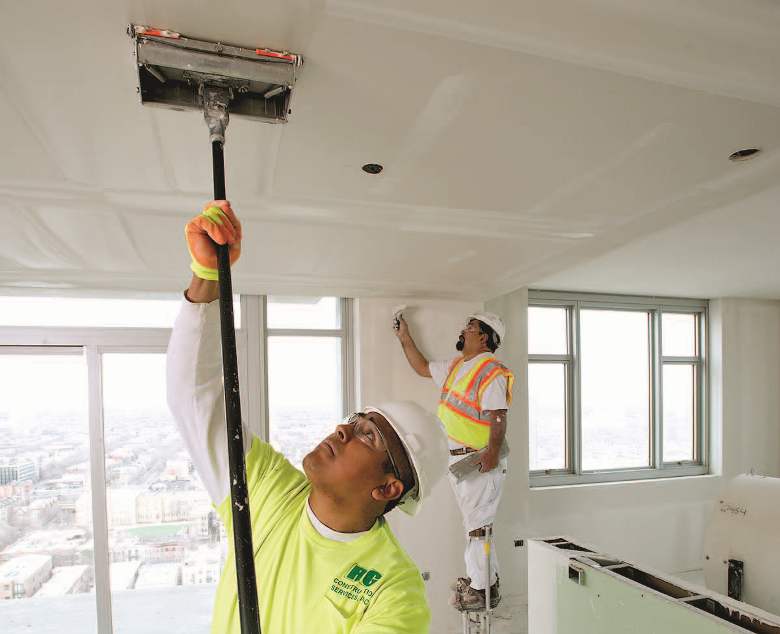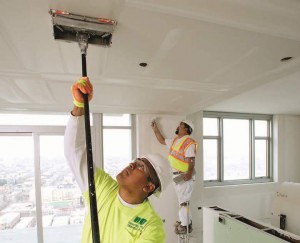
Drywall finishing tools for improving productivity

Ames Taping Tools, a manufacturer of drywall tools and accessories, surveyed hundreds of customers nationwide and found that job-ready tools can boost productivity as much as 15 percent.
The goal for production drywall finishing is to maximize the time-on-wall; that is, the time spent finishing drywall. Ordering supplies, performing tool maintenance and other secondary tasks all detract from active drywall finishing – and profitability.
For contractors who have the time, manpower and inclination to carefully maintain their drywall finishing tools, outright purchase of automatic taping equipment is ideal, as it provides reliable performance with a relatively low investment. Routine cleaning, lubrication and replacement of worn parts keeps drywall tools operating at peak performance.
Contractors who have to share their tools with larger crews or want to save time on routine maintenance while still maintaining peak tool performance often rent drywall finishing tools. This assures a clean, fully calibrated tool every time.
The productivity thief is found between those two scenarios. Some contractors purchase drywall finishing tools with the best intentions of maintaining them at peak performance, but due to workload or compressed schedules can’t find the time. This often results in compensating with additional hours or adding staff.
A defective tool that’s held together with duct tape, wire or rubber bands inevitably results in less productivity, substandard quality, time-consuming repetitions and even jobsite injuries. For example, an automatic taper that isn’t feeding properly wastes time. This drywall tool has more than 350 finely tuned parts. How many fewer board feet per day will a worker finish with a tool that’s operating at 75 percent capacity?
“When it comes to best practices in finishing drywall, every finisher has a slightly different technique, but today’s automatic taping tools serve as a quality control system – so that every joint, every inside corner is identical to the last one – even in direct sunlight that shows every defect,” says Tony Cruzado, co-owner of Bridgeport, Connecticut-based CGM Acoustics. “We’re competing against contractors with lower labor rates and less overhead, so we have to leverage technology to squeeze additional output from every man-hour.”
Drywall finishing efficiencies
There are more than 20 wear parts in the typical automatic taping tool that require replacement in the normal course of operation. For a tool owner, maintaining and replacing these parts is a requirement to maintain performance. For a tool renter, the parts are replaced at the time of service, but are often included with the tool when it’s rented.
Some tool rental companies offer free jobsite delivery, so workers can easily and efficiently exchange damaged tools. These programs can save customers time and labor by shortening the downtime associated with non-working or inefficient tools. With no long-term obligation, you have the flexibility to upgrade to a newer tool anytime – so you never have to worry about getting stuck with a tool you no longer want.
Rent vs. own
In addition to the production efficiencies offered by tool rental arrangements, many contractors are able to take annual tax write-offs for leased equipment. Tool owners can depreciate the cost of a purchase over the lifespan of a tool. While both offer tax savings, deductions for equipment rentals are allowed each year they are incurred, while deductions for purchased tools are based on the lifetime depreciation of a tool and cannot be claimed repeatedly.
Larger operations typically leverage the efficiencies and services associated with rental agreements, while many individual contractors prefer the familiarity of their own tools. Professional drywall finishers do what it takes to deliver enhanced productivity, improved finish quality and jobsite savings.

